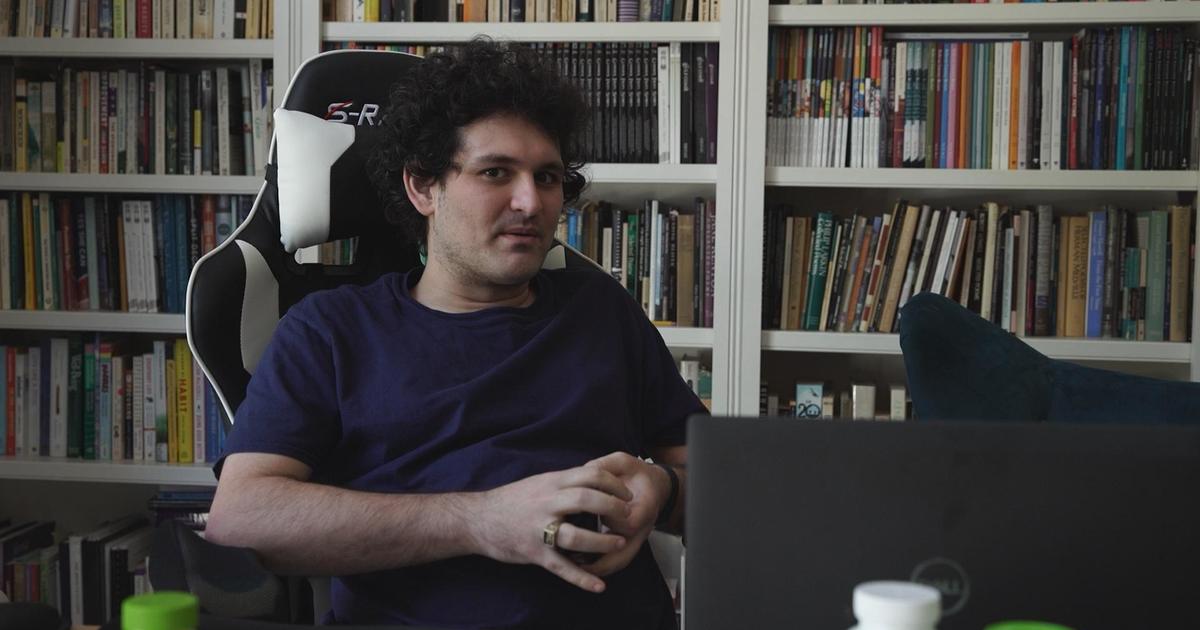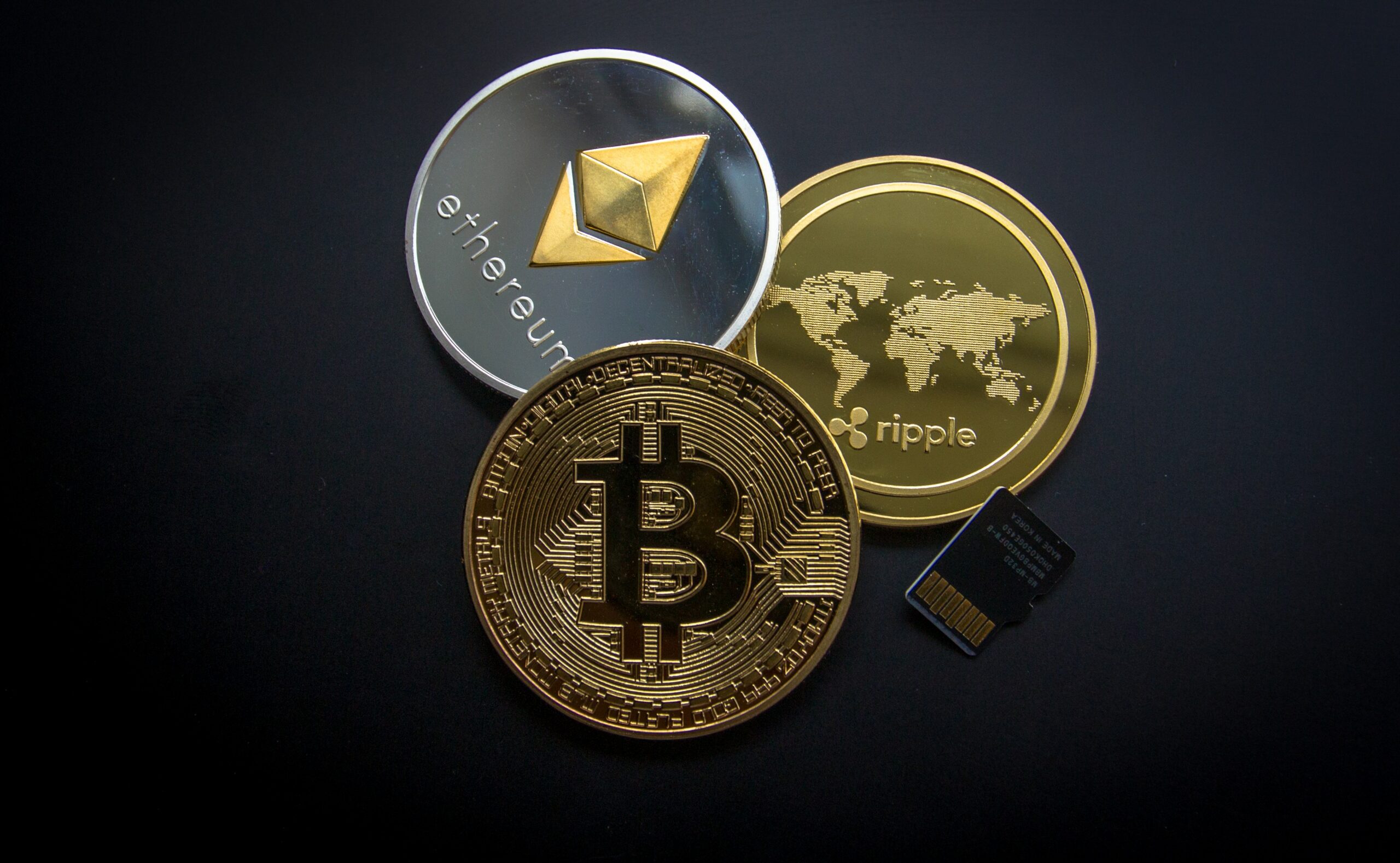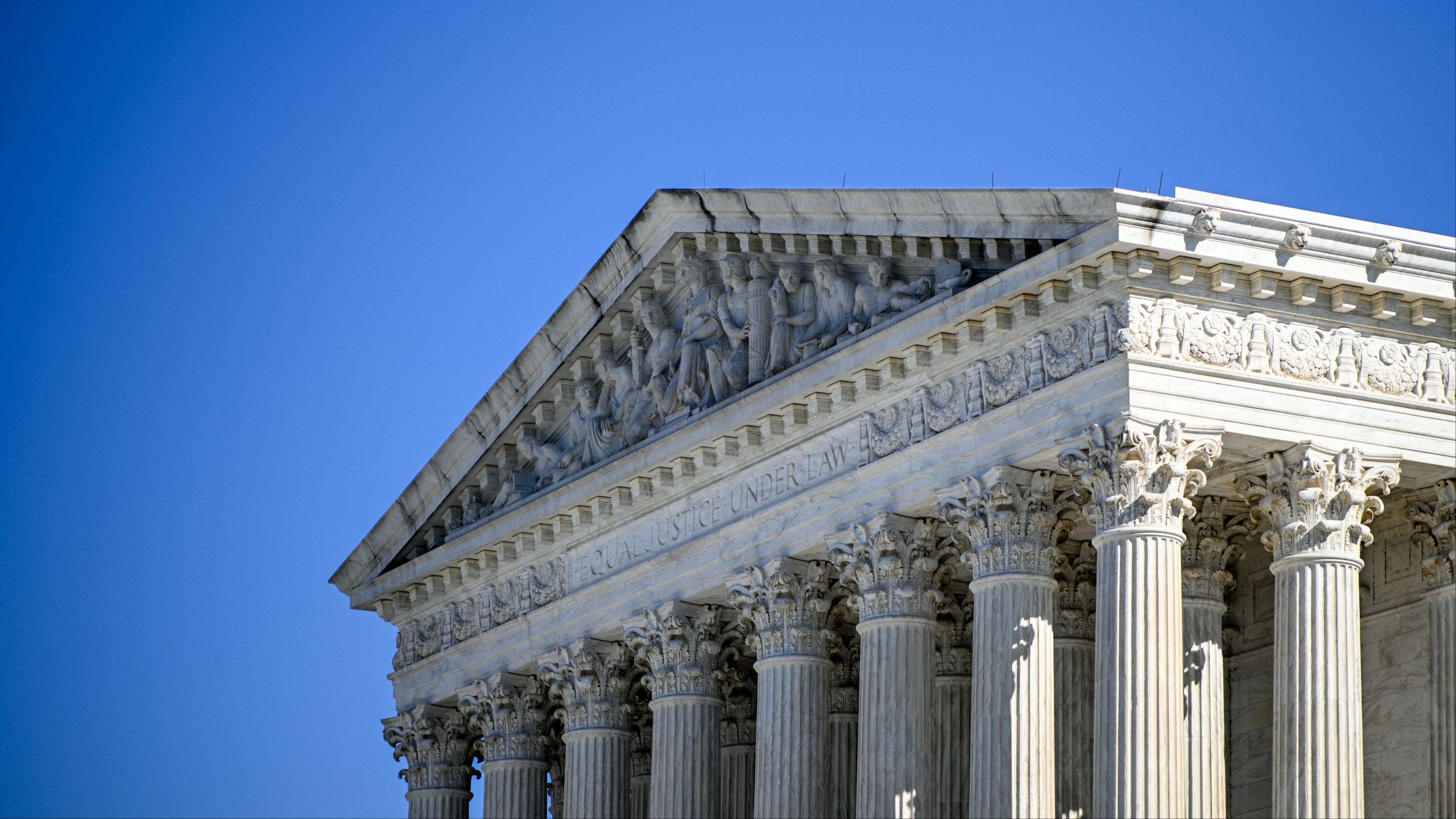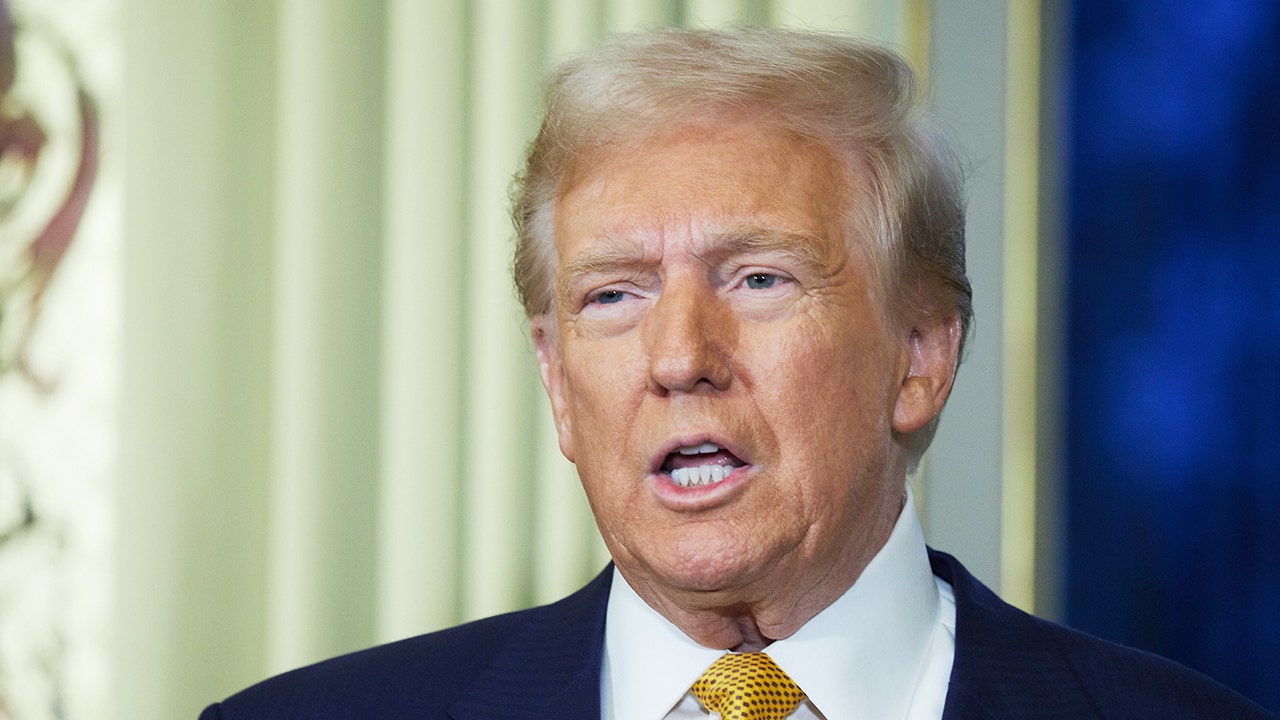Crypto
Sam Bankman-Fried “thinks he’s innocent,” author Michael Lewis says ahead of book about FTX founder

FTX founder Sam Bankman-Fried‘s trial begins on Tuesday. The former cryptocurrency superstar is facing federal fraud charges, and a book detailing the alleged fraudster’s rise and fall is set to be published the same day.
Best-selling author Michael Lewis had all-hours access to Bankman-Fried and met him more than 100 times over two years. Lewis details how Bankman-Fried’s empire crumbled in “Going Infinite,” but he leaves it to readers to decide if Bankman-Fried was a cryptocurrency con man, or a really smart guy incapable of running and managing a business.
The rise of crypto superstar Sam Bankman-Fried and FTX
Bankman-Fried, once considered by some to be the J.P. Morgan of crypto, worked as a Wall Street trader before moving to Berkeley at 25 to start his own trading firm, Alameda Research. Instead of stocks and bonds, he dealt in crypto, a digital form of currency not tied to a centralized system. Bankman-Fried made a fortune and seized on the idea of opening his own cryptocurrency exchange: FTX.
“It’s owning the casino,” Lewis said. “He started as a gambler and he realized that, you know, building the better casino was actually going to be more valuable.”
Soon, roughly $15 billion a day in trades were executed on FTX, and Bankman-Fried was worth more than $20 billion before the age of 30. Lewis says he didn’t know anything about the crypto wunderkind when a friend called asking Lewis to meet with Bankman-Fried.
“All I knew was I was supposed to evaluate his character. And that 18 months earlier, he had nothing. Now he had $22.5 billion and was the richest person in the world under 30,” Lewis told 60 Minutes.
When they first met, Lewis says he learned that Bankman-Fried didn’t care much about the trappings of wealth; he was committed to making as much money as possible so that he could give it away as efficiently as possible, all in the service of a social movement: effective altruism.
Bankman-Fried set out to confront what he saw as existential threats to humanity: AI running amok, the threat of a future pandemic and something even more unusual: Donald Trump. According to Lewis, Bankman-Fried felt the former president was undermining democracy. Bankman-Fried, who donated lavishly to political campaigns, looked into paying Trump not to run for president in 2024. Lewis writes in “Going Infinite” that Bankman-Fried’s team had even gotten a number from someone inside the Trump operation: $5 billion.
“They were still having these conversations when FTX blew up,” Lewis said. “So why didn’t it happen? He didn’t have $5 billion anymore.”
The downfall of Sam Bankman-Fried and FTX
By the spring of 2022, FTX had taken root in the Bahamas. Bankman-Fried moved the company not for the beaches, but for the friendly regulatory climate. The company had cleared a swath of land for a new corporate headquarters, but all was not well.
Lewis noted that Bankman-Fried avoided hiring “grownups” at FTX and felt that anyone over the age of 45 was useless, but that if ever there were a corporate leader in need of adult input to manage 400 employees, it was Bankman-Fried. The author explained that even Bankman-Fried’s closest colleagues thought he was a horrible manager.
“His sole experience of leadership was running puzzle hunts for math nerds out of high school,” Lewis said. “And actually thought deep down, if you asked him, people shouldn’t need to be managed. So he proceeded to act on that and basically didn’t manage them.”
There was no chief financial officer, no human resources department and no compliance officer.
“It was all Sam’s world and there was nobody there to say, like, ‘don’t, don’t do that,’” Lewis told 60 Minutes correspondent Jon Wertheim.
To run his privately held trading firm, Alameda Research, Bankman-Fried installed a former Wall Street trader, Caroline Ellison, who also became his girlfriend. But the pair broke up and were not communicating in the months before FTX collapsed.
The rupture occurred at precisely the same time crypto prices collapsed in the summer of 2022.
Though Bankman-Fried owned the FTX exchange, he was also trading crypto on FTX through Alameda Research.
“He was gambling in his own casino, and it created conflicts of interest,” Lewis said.
Then came a one-two punch: a leak of Alameda Research’s unflattering balance sheet in early November, and days later, Changpeng Zhao, the head of a rival exchange, questioned FTX’s viability on Twitter. The effect: a panic run on FTX.
“It unravels because the depositors at FTX want their money back and it’s not all there,” Lewis explained.
In large part, the money wasn’t there because investors’ funds intended for FTX wound up in Bankman-Fried’s Alameda Research to the tune of more than $8 billion.
Bankman-Fried lost virtually everything over a matter of days last November.
Lewis told 60 Minutes he does not believe Bankman-Fried knowingly stole customers’ money, and explained that in the early days of FTX, the company couldn’t get a bank account, so customer funds were sent to Alameda Research, which could get a bank account. Those funds were never transferred over to FTX.
Lewis asked Bankman-Fried how he could not know that $8 billion of investors’ money was in Alameda Research instead of on FTX. Lewis told 60 Minutes that Bankman-Fried said: “”You have to understand that when it went in there, it was a rounding error. That it felt like we had infinity dollars in there and that I wasn’t even thinking about it.’”
John J. Ray III, who stepped in to lead FTX after it filed for bankruptcy in November, previously said the company collapsed because of “grossly inexperienced” leadership.
Sam Bankman-Fried’s arrest and the charges he faces
Lewis returned to the Bahamas to see Bankman-Fried as his crypto empire collapsed. A month later, Bankman-Fried was arrested and extradited to New York to face federal charges that he had fraudulently used customer deposits to finance billions of dollars in venture capital investments, real estate purchases and political donations.
Bankman-Fried was indicted on and pleaded not guilty to seven charges, including wire fraud and conspiracy to commit wire fraud against lenders and customers, conspiracy to commit securities fraud and conspiracy to commit money laundering.
Bankman-Fried was released on bail not long after his arrest. He wore an ankle monitor and was living in his childhood home in northern California with his parents, who have also been ensnared in legal proceedings tied to FTX. Lewis would drive there to meet with Bankman-Fried so they could continue their conversations. The judge in the case later instituted a gag order and put Bankman-Fried in jail in New York City for violating terms of his release.
What’s next for Sam Bankman-Fried
Bankman-Fried’s trial opens on Tuesday.
“He genuinely thinks he’s innocent,” Lewis said. “I can tell you his state of mind four or five months ago. He’s like, ‘if you offered me plead guilty and do six months of house arrest, I’d still say no.’”
Bankman-Fried faces a potential combined sentence of more than 100 years if he’s convicted, but Lewis suspects Bankman-Fried’s biggest fear if he has to go to prison is not having access to the internet.
“Now that sounds crazy, but I do think that if he had the internet, he could survive jail forever,” Lewis said. “Without having a constant stream of information to react to, I think he may go mad. If you gave Sam Bankman-Fried a choice of living in a $39 million penthouse in the Bahamas without the internet, or the Metropolitan Detention Center in Brooklyn with the internet, there’s no question in my mind he’d take the jail.”
Reported by Jon Wertheim, Draggan Mihailovich and Emily Cameron

Crypto
My Top Cryptocurrency to Buy Right Now (Hint: It's Not Bitcoin) | The Motley Fool

The performance of Bitcoin (BTC -0.53%) this year has been nothing short of extraordinary. It’s now up about 46% since the election on Nov. 5, and 146% year to date. Best of all, Bitcoin recently broke through the $100,000 price level to hit another all-time high just north of $108,000.
But what if I told you that there is another top cryptocurrency that is up more than 120% since the election, and 430% year to date? And that this cryptocurrency also just set a new all-time high? That cryptocurrency is Sui (SUI -3.69%), which now ranks 14th among all cryptocurrencies with a $13 billion market cap.
What is Sui and why haven’t I heard of it before?
If you’ve never heard of Sui, that’s understandable. The cryptocurrency only launched in May 2023, just as the market was emerging from the crypto winter of 2022. So, in many ways, its launch flew under the radar of investors. There were bigger issues to consider. The industry was still coping with the aftermath of the collapse and scandal of crypto exchange FTX in November 2022, and nobody was very interested in hearing about another new cryptocurrency launch.
But fast-forward to August 2024. That’s when 21Shares — the company that partnered with Cathie Wood’s Ark Invest on the launch of spot exchange-traded funds (ETFs) for Bitcoin and Ethereum (ETH -0.79%) — released a research report on Sui, detailing all of its unique characteristics. For example, it described how a new technical upgrade suddenly made Sui faster than any other top blockchain by a substantial margin. It pointed out how Sui was rapidly growing in terms of total value locked (TVL), which is a key metric showing the relative strength of a particular blockchain.
Image source: Getty Images.
The title of the report (“Is Sui a Solana (SOL -0.00%) Killer?”) was very provocative, at least for crypto investors. It suggested that Sui had the technological chops to take on Solana, which now ranks as the fifth-largest cryptocurrency. For several years now, Solana has been positioned as the next Ethereum, so Sui being tabbed as a potential Solana killer is a big deal. In fact, 21Shares suggested that there might be a $68 billion market opportunity for Sui if it was able to take on Solana and win.
How high can Sui go in 2025?
My primary concern right now with Sui is that it may be overheating. Just like Bitcoin, it is smashing through all-time high after all-time high. Right now, Sui is trading at about $4.50 after briefly testing the $5 price level. From the perspective of crypto traders, $5 presents the same psychological price barrier for Sui that $100,000 did for Bitcoin. It took Bitcoin a while to break through the $100,000 level, so Sui may not be able to break through the $5 price level by the end of this year.
But, in 2025, watch out. Just take a look at this comparison chart of Bitcoin and Sui since the presidential election. That leads me to think that the market is very bullish on Sui’s prospects under the Trump administration.

Bitcoin / U.S. dollar chart by TradingView
Moreover, consider the trading volume that Sui is now seeing on Coinbase Global (COIN 1.75%). Sui has become one of the 10 most popular cryptocurrencies on the platform in terms of 24-hour trading activity. Granted, the trading volume in Sui is nowhere near that of Bitcoin or Ethereum. But there’s more activity in Sui than in popular cryptocurrencies such as Chainlink, Litecoin, Cardano, Shiba Inu, and Avalanche.
Best of all, Sui has a major new product launch coming in 2025. It’s a $599 handheld gaming device that is currently available for pre-order online. If that product launch is a success, then it could be off to the races for Sui. It could easily double in price to hit the $10 price level.
This cryptocurrency could soar even higher if it ever realizes its full potential as the next Ethereum. Imagine if you had invested in Ethereum just 18 months after its launch. Most likely, you’d be a crypto millionaire by now. In December 2016, Ethereum was trading around $5, which is roughly where Sui is trading right now. Today, Ethereum trades for about $3,400.
That said, I can’t emphasize enough how speculative Sui is. It is still a baby in crypto terms. It has only been around for 18 months, and it can be difficult to get good data and reliable information about it. So, do your due diligence before investing in Sui, and keep your expectations in check. An investment opportunity like Ethereum might only come around once in a lifetime, so it’s asking a lot for it to happen with Sui as well.
Dominic Basulto has positions in Bitcoin, Ethereum, SUI, and Solana. The Motley Fool has positions in and recommends Bitcoin, Coinbase Global, Ethereum, SUI, and Solana. The Motley Fool has a disclosure policy.
Crypto
S. Korea, US conducting joint research to block NK cryptocurrency heists

A representation of Bitcoin and a price chart are seen in this October 2023 photo illustration. Reuters-Yonhap
South Korea and the United States are conducting joint research to strengthen protection against cryptocurrency heist attempts amid growing concerns of such attacks by North Korea-linked hackers, officials said Sunday.
Based on a recently signed technical annex between the South Korean government and the U.S. Department of Homeland Security, the two sides will jointly develop technologies to prevent cryptocurrency-targeted attacks and to track stolen assets, according to authorities and cybersecurity industry officials.
The science ministry plans to support such research through the Institute of Information & Communications Technology Planning & Evaluation until 2026.
The move comes as the price of bitcoin recently surged to $100,000 after the U.S. presidential election last month, raising concerns of increased attempts by hackers to steal virtual assets.
While the United States collaborates with other countries for cybersecurity research, it is known to have chosen South Korea for research on digital asset tracking technology as North Korea is seen as a key culprit behind cryptocurrency heists.
Under the program, South Korean and U.S. researchers, including those from Korea University and the RAND research institute, will focus on technologies to prevent and track hackers when they steal assets from a cryptocurrency exchange.
They will also focus on understanding how they convert or launder other financial assets they obtain into virtual assets through illegal ransomeware or other methods.
North Korea is known as a major player in cryptocurrency heists, with hackers linked to the country estimated to have stolen $1.34 billion worth of cryptocurrency across 47 incidents this year, according to Chainalysis, a blockchain analysis firm. (Yonhap)
Crypto
Crypto And Bitcoin Go Mainstream In 2024: Here Are 5 Major Trends | Bitcoinist.com

There is no question that the cryptocurrency industry witnessed explosive growth in 2024, with the flagship cryptocurrency Bitcoin continuing to lead the market. Data shows that the total market capitalization of the crypto industry has more than doubled over the past year.
While it has been challenging to find a common theme for how the market has improved in 2024, it is easy to point out the different aspects of growth in the digital asset industry this year. A prominent blockchain firm has identified five trends that reflect the shift experienced in the crypto market in the past 12 months.
5 Trends In The Crypto Space In 2024
In its latest weekly report, market intelligence platform IntoTheBlock explained the five major on-chain trends that reflect the growth of the cryptocurrency industry in the past year. It’s been all (or mostly) fireworks for the digital asset market, specifically Bitcoin, in 2024.
Firstly, IntoTheBlock pointed to the growth and the rising dominance of Bitcoin in the crypto market, especially after the approval of spot exchange-traded funds in the United States. As a result, the premier cryptocurrency’s market share hit its highest level in over three and a half years.
The crypto analytics firm highlighted that Trump’s success in the presidential elections also played a role in driving higher the value of Bitcoin. All in all, Bitcoin’s dominance has now moved from under 50% to 59% year-to-date.
Like Bitcoin, the meme coin market also witnessed unprecedented growth in 2024, with its aggregate market capitalization surging by over 400%. IntoTheBlock specifically mentioned the introduction of Solana-based launchpad Pump.fun, which catalyzed a meme coin explosion in the Solana ecosystem.
Source: IntoTheBlock
However, this meme coin trend on the Solana network left a negative impact on the Ethereum ecosystem and ETH’s price performance in 2024. With meme coins shifting to Solana and non-fungible tokens (NFTs) not making a strong return this bull cycle, there was a decline in Ethereum network fees, leading to less ETH being burnt.
Furthermore, decentralized finance (DeFi) saw a resurgence in 2024, as fresh capital flowed into various protocols and projects. As less value was lost to hacks and exploits and regulatory pressure was reduced in 2024, the aggregate market cap of the DeFi sector hit its highest since early 2022.
Finally, IntoTheBlock noted that new projects that were pioneered during the last bear market saw remarkable growth in 2024. For instance, restaking projects and basis trading protocols were some of the highlights in the crypto space in the past year.
Total Crypto Market Cap
As of this writing, the total cryptocurrency market capitalization stands at around $3.49 trillion. According to data from TradingView, the crypto market cap has increased by more than 105% year-to-date.
The total cryptocurrency market capitalization at $3.3 trillion | Source: daily TOTAL chart on TradingView
Featured image from Pexels, chart from TradingView
-

 Politics1 week ago
Politics1 week agoCanadian premier threatens to cut off energy imports to US if Trump imposes tariff on country
-
/cdn.vox-cdn.com/uploads/chorus_asset/file/25789444/1258459915.jpg)
/cdn.vox-cdn.com/uploads/chorus_asset/file/25789444/1258459915.jpg) Technology1 week ago
Technology1 week agoOpenAI cofounder Ilya Sutskever says the way AI is built is about to change
-

 Politics1 week ago
Politics1 week agoU.S. Supreme Court will decide if oil industry may sue to block California's zero-emissions goal
-
/cdn.vox-cdn.com/uploads/chorus_asset/file/25546252/STK169_Mark_Zuckerburg_CVIRGINIA_D.jpg)
/cdn.vox-cdn.com/uploads/chorus_asset/file/25546252/STK169_Mark_Zuckerburg_CVIRGINIA_D.jpg) Technology1 week ago
Technology1 week agoMeta asks the US government to block OpenAI’s switch to a for-profit
-

 Politics1 week ago
Politics1 week agoConservative group debuts major ad buy in key senators' states as 'soft appeal' for Hegseth, Gabbard, Patel
-

 Business7 days ago
Business7 days agoFreddie Freeman's World Series walk-off grand slam baseball sells at auction for $1.56 million
-
/cdn.vox-cdn.com/uploads/chorus_asset/file/23951353/STK043_VRG_Illo_N_Barclay_3_Meta.jpg)
/cdn.vox-cdn.com/uploads/chorus_asset/file/23951353/STK043_VRG_Illo_N_Barclay_3_Meta.jpg) Technology7 days ago
Technology7 days agoMeta’s Instagram boss: who posted something matters more in the AI age
-
News1 week ago
East’s wintry mix could make travel dicey. And yes, that was a tornado in Calif.






















